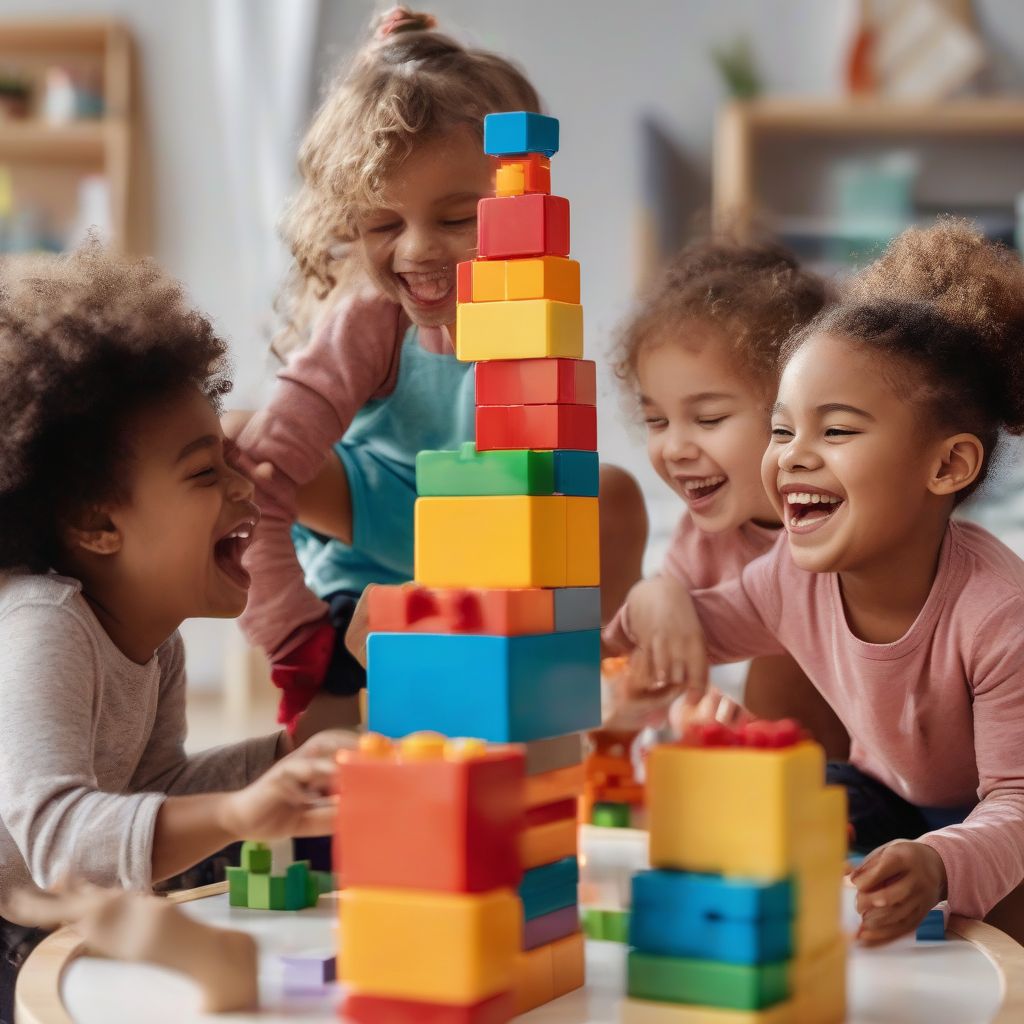“Play is the work of childhood,” said Jean Piaget, a renowned psychologist. And how true that is! As a nutritionist and meal prepping coach, I see the power of engaging all the senses in healthy eating habits. Children learn best when they’re actively involved and having fun, and what better way than through play? Let’s dive into creative strategies to turn playtime into learning time.
Why is Play-Based Learning So Effective?
Before we jump into the “how,” let’s understand the “why.” Play-based learning isn’t just about letting kids run wild (although that’s important too!). It taps into their natural curiosity and love for exploration.
Think about it:
- Engagement: Play grabs their attention like nothing else.
- Active Learning: Instead of passively listening, they’re doing, experimenting, and discovering.
- Development Across the Board: Play fosters cognitive, social, emotional, and physical development.
- Intrinsic Motivation: They’re driven by the joy of learning itself, not external rewards.
 Children Playing with Building Blocks
Children Playing with Building Blocks
Fun and Educational Play Activities for Different Age Groups
Every age brings new skills and interests. Here’s how to tailor play to your child’s developmental stage:
Toddlers (Ages 1-3)
- Sensory Play: Think water tables, playdough, finger painting, and sandboxes. These activities stimulate their senses and help them learn about textures, colors, and shapes.
- Building Blocks: Encourage creativity, problem-solving, and fine motor skills with blocks of various sizes and shapes.
- Pretend Play: Let their imaginations soar with dress-up clothes, toy kitchens, and dolls. This boosts language skills, social interaction, and emotional intelligence.
Preschoolers (Ages 3-5)
- Storytelling and Dramatic Play: Act out stories, create puppet shows, or put on plays. This builds vocabulary, comprehension, and confidence.
- Arts and Crafts: Get messy with painting, drawing, sculpting, and collaging. These activities develop creativity, self-expression, and fine motor control.
- Building and Construction: Introduce more complex building materials like LEGOs, magnetic tiles, or wooden blocks. This enhances spatial reasoning, problem-solving, and engineering skills.
Early Elementary (Ages 5-8)
- Board Games: Games like Scrabble, Boggle, and Monopoly teach strategy, vocabulary, math, and critical thinking.
- Science Experiments: Engage their scientific minds with simple experiments like creating volcanoes, growing plants, or making slime.
- Historical Role-Playing: Bring history to life by dressing up as historical figures, recreating events, or researching different time periods.
Tips for Creating a Playful Learning Environment
- Make it Safe and Inviting: Ensure a child-friendly space with age-appropriate toys and materials.
- Follow Their Lead: Observe what interests them and provide opportunities to explore those interests further.
- Ask Open-Ended Questions: Instead of giving answers, encourage critical thinking with questions like, “What do you think will happen if…?” or “How did you build that?”
- Don’t Be Afraid of a Little Mess: Embrace the mess that often comes with play! It’s a sign of learning and exploration.
- Limit Screen Time: While educational apps have their place, prioritize hands-on, imaginative play.
Connecting Play to Real-World Learning
Learning doesn’t have to be confined to a classroom. Connect play to everyday life:
- Grocery Store Adventures: Have your child help you choose fruits and vegetables, compare prices, or search for specific items.
- Cooking Together: Turn meal prep into a fun learning experience. Let them measure ingredients, mix, stir, and learn about different foods.
- Nature Walks: Explore the great outdoors! Collect leaves, identify insects, observe birds, and talk about the changing seasons.
 Family Cooking Together in the Kitchen
Family Cooking Together in the Kitchen
The Long-Term Benefits of Play-Based Learning
Investing in play-based learning has a ripple effect, setting children up for future success:
- Improved Academic Performance: Children who engage in play-based learning tend to perform better academically, especially in areas like language, creativity, and problem-solving.
- Enhanced Social Skills: Play provides opportunities for cooperation, negotiation, and conflict resolution.
- Increased Confidence and Self-Esteem: When children feel successful in their play, it boosts their confidence and self-belief.
- A Lifelong Love of Learning: The most important gift you can give a child is a love of learning, and play is the key!
Conclusion
Engaging children in learning through play is a fun and effective way to nurture their curiosity, creativity, and love for exploration. By creating a playful learning environment and providing opportunities for meaningful play experiences, you can set your child on the path to a lifetime of learning and discovery.
Do you have any favorite play-based learning activities you use with your children? Share your tips and stories in the comments below!
For more ideas and resources on supporting your child’s development, explore these articles:
- The Best Hands-on Learning Activities for Kids
- The Importance of Setting Developmental Goals for Children
- The Future of Educational Materials in the Digital Age
- Resources for Parents and Teachers to Enhance Children’s Education
- How to Adapt Developmental Guides for Children with Special Needs
[amazon bestseller=”Play-Based Learning”]
